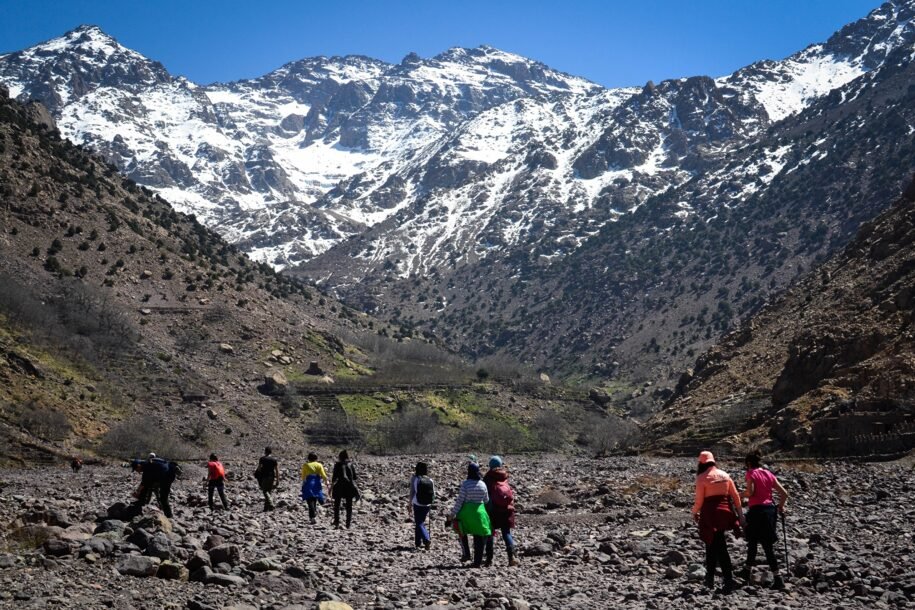Morocco is a beautiful country to visit year-round, and January is no exception. Even though it is the coldest month of the year, Morocco’s diverse geography and climate offer a variety of experiences for travelers. Whether you want to explore bustling cities, relax along the Atlantic coastline, or experience the magic of the Sahara Desert, January has plenty to offer. This article provides a detailed look at what you can expect when visiting Morocco in January, covering weather conditions, must-visit destinations, and essential travel tips.
What’s the Weather Like in Morocco in January?
The weather in Morocco during January can vary significantly depending on the region. While coastal areas enjoy mild and relatively stable conditions, inland and mountainous regions experience colder temperatures, with some areas even dipping below freezing at night. Generally, Morocco in January is warmer than most of Europe, making it an attractive winter getaway. However, visitors should prepare for a mix of warm days and chilly nights.
The country can be divided into three main climatic zones: the coastal regions, the interior plains and mountains, and the desert areas. Each zone offers a unique climate, which makes planning your itinerary essential to enjoying your trip.
Weather in Coastal Regions
The Moroccan coastline, influenced by the Atlantic Ocean, boasts relatively mild winters. Cities like Rabat, Casablanca, and Essaouira experience daytime temperatures averaging around 17°C to 20°C (63°F to 68°F). The Atlantic Ocean helps regulate temperatures, preventing extreme cold. However, occasional rain showers can occur, so it’s advisable to pack a light raincoat or umbrella.
Essaouira, known for its charming harbor and windy conditions, is a favorite among surfers and kiteboarders. January in Essaouira is cooler than the summer months, but the winds are a constant, adding a fresh feel to the atmosphere. While swimming might be too chilly for many, the beaches remain a beautiful place for walks or simply relaxing by the water.
Agadir, further south, offers slightly warmer weather and less rain. Its sandy beaches and modern resorts make it a great choice for those seeking a beach vacation in January. Agadir’s sunshine and milder temperatures make it one of the most popular destinations for winter visitors.
Weather in Marrakech
Marrakech is one of Morocco’s most visited cities, and January offers pleasant daytime temperatures ranging from 18°C to 22°C (64°F to 72°F). The cooler weather makes exploring the city’s vibrant streets, gardens, and historical landmarks more enjoyable compared to the scorching heat of the summer months. During the day, a t-shirt or light sweater is usually enough, but as the sun sets, temperatures can drop to around 5°C (41°F). Warm layers are essential for evenings, especially if you plan to dine outdoors or take an evening stroll through the medina.
One of the advantages of visiting Marrakech in January is the reduced crowds. The city feels less hectic, allowing you to take in the sights at a relaxed pace. Rooftop cafes become a perfect spot to soak up the winter sun while enjoying traditional Moroccan tea.
Weather in the Atlas Mountains
The Atlas Mountains, which span much of Morocco, experience a dramatic drop in temperature during January. Higher altitudes often see snow, creating a stunning winter landscape. This makes January an excellent time for skiing or snowboarding in areas like Oukaïmeden, located about 80 kilometers from Marrakech. Snow-capped peaks provide a picturesque backdrop, perfect for photography and outdoor activities.
For hikers, lower altitudes of the Atlas Mountains offer pleasant daytime temperatures but very cold nights. Proper winter gear, including jackets, gloves, and warm sleeping bags, is essential for anyone planning to camp or trek in these areas.
Weather in the Sahara Desert
The Sahara Desert is one of Morocco’s most iconic destinations, and January is a fantastic time to visit. Daytime temperatures in desert towns like Merzouga typically reach around 20°C (68°F), while nights can drop below 5°C (41°F). The contrast between warm days and chilly nights is striking, so travelers should pack layers to adapt to the changing temperatures.
January’s cooler weather is ideal for outdoor desert activities. Camel rides across the golden dunes of Erg Chebbi are more comfortable than during the sweltering summer months. Many visitors also choose to spend a night in a traditional desert camp, where they can enjoy stargazing and the warmth of a campfire. Warm clothing is a must for these overnight stays, as the desert nights can be particularly cold.
Northern Morocco in January
In northern cities like Tangier, Chefchaouen, and Fes, the climate is cooler and damper. Influenced by the Atlantic and Mediterranean, this region experiences mild days and chilly evenings. Daytime temperatures hover around 15°C to 18°C (59°F to 64°F), while rain showers are more frequent compared to southern Morocco.
Fes, one of Morocco’s most historic cities, offers a unique charm in January. The medina, a UNESCO World Heritage Site, feels less crowded, and the cooler weather makes exploring its narrow alleys more comfortable. However, heating is not always common in traditional accommodations, so it’s wise to check ahead and pack warm clothing for the evenings.
Chefchaouen, the famous blue city, is another popular destination in northern Morocco. While January temperatures are mild, the higher altitude can make mornings and nights feel colder. The city’s stunning blue-washed buildings look particularly striking under the softer winter light.
Travel Tips for Visiting Morocco in January
When traveling to Morocco in January, packing the right clothing is key. Layers are essential, as daytime temperatures can be warm, but evenings are significantly cooler. Lightweight sweaters, jackets, and scarves will keep you comfortable. In coastal regions, a raincoat might come in handy for unexpected showers, while those heading to the desert or mountains should bring thermal wear for cold nights.
Accommodation in Morocco varies widely, and not all places offer heating. When booking hotels or riads, inquire about heating options to ensure a comfortable stay. Traditional riads, while beautiful, can be chilly during winter, so choosing accommodations with fireplaces or electric heaters can make a big difference.
Transportation between cities is generally reliable, with trains, buses, and private car services available. However, the mountainous areas can experience snow, so road conditions might be affected. Checking the weather forecast before setting out on longer journeys is advisable.
Is January a Good Time to Visit Morocco?
Absolutely! While January is the coldest month in Morocco, it offers unique opportunities that other seasons do not. The cooler weather is ideal for exploring cities and historical sites without the discomfort of extreme heat. The snowy Atlas Mountains provide a winter wonderland, and the Sahara Desert is more pleasant for outdoor activities. Coastal regions offer mild temperatures and a peaceful atmosphere, making them perfect for relaxation.
Moreover, January is a quieter time for tourism in Morocco. This means fewer crowds at popular attractions and a more relaxed travel experience. Whether you’re wandering through the medinas, hiking in the mountains, or enjoying a desert adventure, Morocco in January is a rewarding destination.
Conclusion
Visiting Morocco in January allows travelers to experience the country’s incredible diversity without the intense heat or overwhelming crowds of the high season. From the bustling streets of Marrakech to the tranquil beaches of Agadir and the awe-inspiring Sahara Desert, January showcases Morocco’s beauty in a unique light. By preparing for varying temperatures and choosing the right destinations, you can experience the beauty of Morocco like never before! Join our Morocco private tours for a personalized adventure through breathtaking landscapes and vibrant culture. Contact us now to plan your dream trip!


Leave a Reply